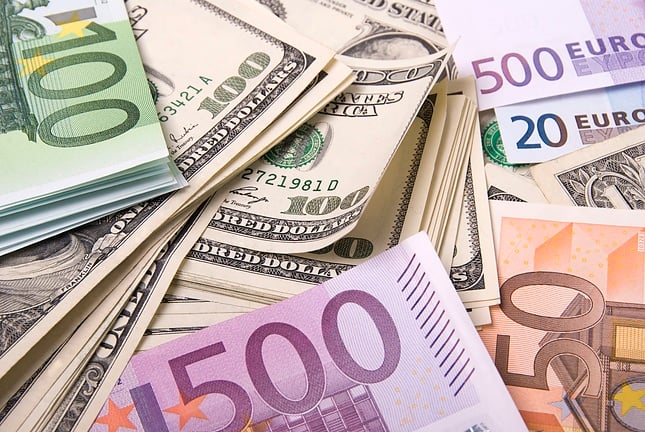Headline inflation in Poland increased markedly in September amid persistently high core inflation. Poland is lagging behind other countries in reducing inflation and the central bank should ease its policy later than others.
According to the flash estimate, CPI inflation in Poland rose to 4.9% year-on-year in September from 4.3% YoY in August. Consumer prices rose by 0.1% compared to the previous month, with food and non-alcoholic beverages increasing by 0.2% month-on-month, gasoline prices falling by 3.4% MoM and energy prices rising slightly by 0.2% MoM. We estimate that there was a marked increase in prices in the core inflation categories, including prices in education.
Much of the increase in the annual inflation rate was due to a low base effect, caused by “controlled” price decreases a year ago during the election campaign. In September 2023, prices fell by 0.4% MoM due, among other things, to reductions in healthcare prices (a fall in pharmaceutical prices following the introduction of a new reimbursement list and free drugs for the elderly and children). Electricity prices eased as the cap on energy consumption at fixed prices was increased.
We estimate that core inflation (excluding food and energy prices) rose to around 4.2-4.3% YoY in September from 3.7% YoY in August. This could be partially explained by the abovementioned reference base effect, but it is not the entire story. In addition to the base, core inflation was buoyed by price increases in education, where the effects of earlier increases in teachers' salaries in the public sector became apparent. Among other things, it boosted the price of services linked to education, such as tutoring sessions, language courses, and so on.
Inflation is expected to stay elevated, nearing 5% year-over-year by the end of the year. At the start of 2025, inflation may rise further, though the extent is uncertain and depends largely on policy decisions regarding measures to shield households from high electricity prices. Additionally, new excise duty rates on cigarettes will come into force. Core inflation is expected to remain persistently high, staying above 4% year-over-year in the latter half of this year and the first half of next year, driven by Poland’s rapid rise in labour costs, which have outpaced those in developed economies and some regional peers.
Poland is lagging behind other countries in reducing inflation, leading to a delay in the Monetary Policy Council’s discussions on starting monetary easing, unlike in many developed nations and the CEE region. Current trends of interest rate reductions outside Poland may pressure the Council to soften its stance. The November National Bank of Poland (NBP) projection is expected to be based on uncertain assumptions, including unresolved energy prices for households from early 2025, so in the Council's view only the March inflation projection will present a reliable path of future inflation.
We anticipate that interest rates will remain unchanged until the end of 2024, with the first NBP rate cut of 25bp likely in the second quarter of 2025. For next year, we project the reference rate to decrease by a total of 100bp, reaching 4.75% by the end of 2025.
Read the original analysis: Poland’s central bank delays monetary easing amid rising inflation
Content disclaimer: This publication has been prepared by ING solely for information purposes irrespective of a particular user's means, financial situation or investment objectives. The information does not constitute investment recommendation, and nor is it investment, legal or tax advice or an offer or solicitation to purchase or sell any financial instrument. Read more here: https://think.ing.com/content-disclaimer/
Recommended Content
Editors’ Picks

EUR/USD bulls maintain the pressure ahead of critical US employment data
EUR/USD clings to small daily gains slightly below 1.1200 on Monday. ECB President Lagarde told the European Parliament that their confidence on inflation returning to target has strengthened after the latest developments. Markets await Fed Chairman Powell's speech.

GBP/USD fluctuates at around 1.3400 ahead of Powell
GBP/USD trades in a narrow channel at around 1.3400 in the second half of the day on Monday. The US Dollar benefits from the cautious market mood and holds its ground as investors' focus shifts to Fed Chairman Powell's speech.

Gold extends slide, trades near $2,640
Gold extends its downward correction to start the week and trades deep in negative territory near $2,640. Profit-taking ahead of the long Chinese holiday and the cautious market mood seems to be weighing on XAU/USD as markets await Fed Chairman Powell's speech.

Johann Kerbrat, Robinhood Crypto GM: “US regulation to be late compared to EU and Asia”
Johann Kerbrat is the Crypto General Manager at Robinhood, the trading app used by many US retail investors during the 2020 meme stock mania.

RBA widely expected to keep key interest rate unchanged amid persisting price pressures
The Reserve Bank of Australia is likely to continue bucking the trend adopted by major central banks of the dovish policy pivot, opting to maintain the policy for the seventh consecutive meeting on Tuesday.

Five best Forex brokers in 2024
VERIFIED Choosing the best Forex broker in 2024 requires careful consideration of certain essential factors. With the wide array of options available, it is crucial to find a broker that aligns with your trading style, experience level, and financial goals.